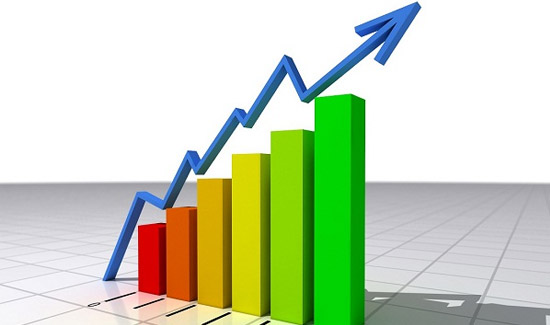By Staff Reporter
ISLAMABAD: Pakistan’s economic outlook for the next year appears promising, with a growth target of 3.5 percent set amidst expectations of political stability, improvements in the external account, and a steadfast macroeconomic environment.
The Planning Commission hoped that these factors are expected to play a crucial role as global oil and commodity prices are projected to decline.
The anticipated decrease in global inflation is also likely to gradually reduce domestic inflation, albeit it is expected to remain in double digits.
In the upcoming fiscal year 2023-24, the agriculture sector is expected to grow by 3.5 percent, contingent upon favorable weather conditions, ample water availability, the availability of certified seeds, fertilizers, pesticides, and affordable agriculture credit facilities.
Enhancing productivity in the livestock subsector is vital for the revival of the agriculture sector.
“The revival of cotton production and sufficient wheat production will not only support the growth momentum but also alleviate balance of payments pressures by reducing import requirements,” the commission said in its annual and review reports for the current and next fiscal years.
The industrial sector is also anticipated to recover in the next fiscal year, with a projected growth rate of 3.4 percent, and large-scale manufacturing (LSM) growth at 3.2 percent.
“The sector is expected to benefit from improved inputs and energy supplies, thanks to the anticipated decline in global oil and commodity prices, increased public sector expenditure, and mega projects for infrastructure development.”
However, there are potential risks due to high-interest rates and exchange rate uncertainties, which may raise the costs of working capital and raw materials.
The housing sector and infrastructure projects may also face challenges due to higher prices of construction materials.
The services sector is forecasted to grow at a rate of 3.6 percent. The expected growth in commodity-producing sectors will complement the targeted growth in the services sector.
Increased economic activity in agriculture and manufacturing sectors will translate into higher wholesale and retail trade, transport, storage, and communications growth.
Additionally, the tourism industry is expected to gain momentum, generating socioeconomic benefits that will extend to retail trade, hotels, and restaurants.
The investment-to-GDP ratio is projected to increase from 13.6 percent in the fiscal year 2022-23 to 15.1 percent in 2023-24, driven by stabilization efforts and political stability.
Fixed investment is expected to grow by 40.5 percent on a nominal basis, while the percentage of GDP is expected to rise from 11.9 percent to 13.4 percent. The targeted national savings rate stands at 13.4 percent of GDP.
To achieve these objectives, fiscal consolidation measures aimed at curbing subsidies and addressing the energy sector’s circular debt are expected to narrow the fiscal deficit.
The monetary policy stance will remain aligned with the objectives of reviving growth and managing inflationary expectations. With declining global inflation, domestic average inflation is expected to gradually decrease to 21 percent next year.
The external sector is expected to improve due to falling global commodity prices and reduced dependence on wheat and edible oil imports, thanks to higher domestic production.
Market-based exchange rates, favorable pro-export policies, and eased administrative import controls are anticipated to enhance the performance of export industries in 2023-24.
Workers’ remittances are also expected to improve through formal channels once the gap between inter-bank and open market exchange rates is resolved.
Furthermore, capital flows related to flood-related Geneva pledges are expected to further bolster the balance of payments position.
Looking back at the current year, the economic growth target of 5 percent for the fiscal year 2022-23 encountered challenges such as the lingering impact of Covid-19, supply disruptions caused by the Russia-Ukraine conflict, and adjustments in the current account deficit.
“Upon assuming office in April 2022, the present government inherited an economy burdened with macroeconomic imbalances, including the highest-ever public debt, dwindling foreign exchange reserves, currency depreciation, massive circular debt, high fiscal deficit, and a significant current account deficit,” the review said.
The devastating floods of 2022 exacerbated the economic situation, displacing millions and causing substantial damage. Political instability, delayed resumption of the IMF program, and gloomy prospects for global growth shattered investor confidence.
The State Bank of Pakistan had to adopt a tight monetary policy throughout the year to address high inflationary pressures, which also hindered economic activities. “Despite these challenges, the economy exhibited resilience and achieved a growth rate of 0.3 percent.”
To address vulnerabilities in the external sector, the government implemented measures to curtail imports and prevent further depletion of foreign exchange reserves.
Consequently, the current account deficit significantly decreased, providing much-needed relief to avoid a sovereign default.
Copyright © 2021 Independent Pakistan | All rights reserved




